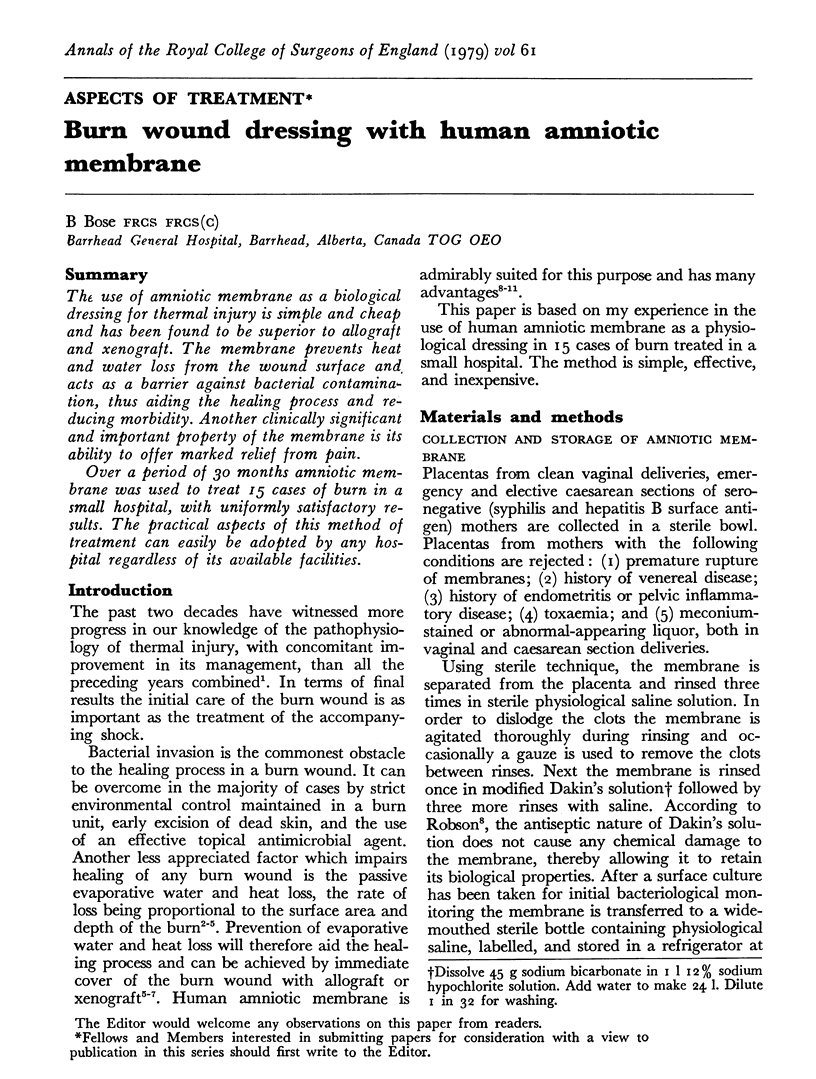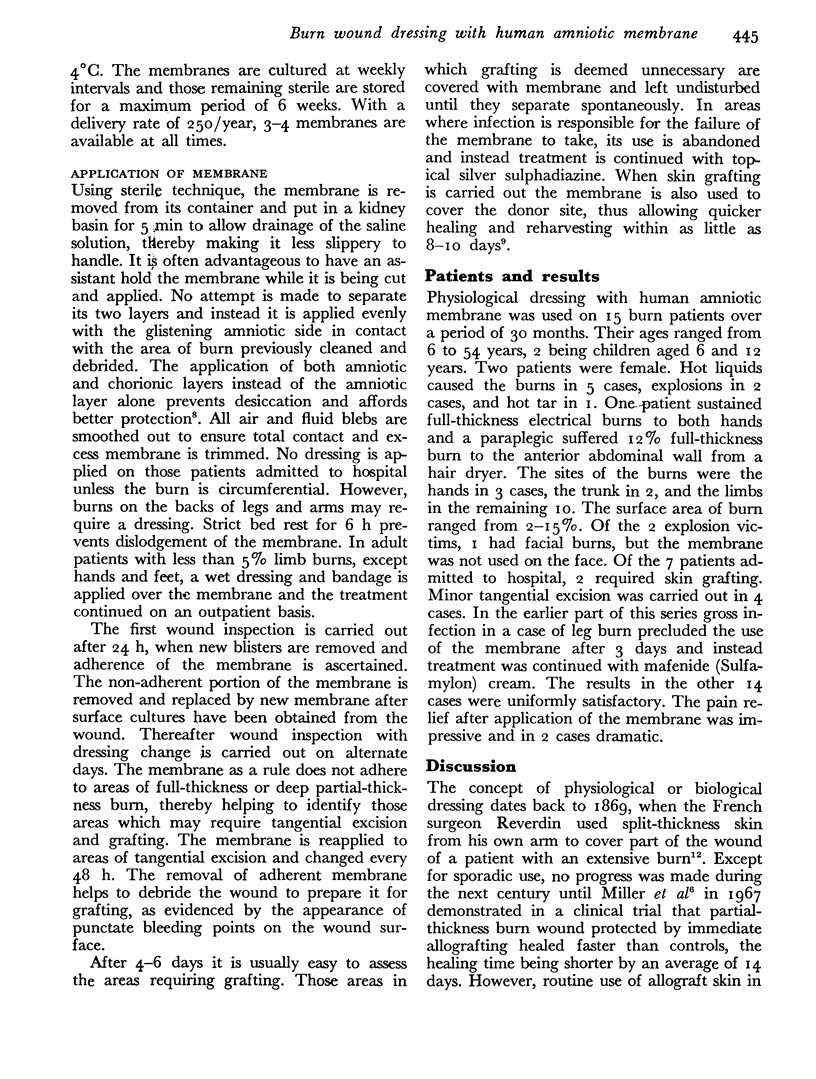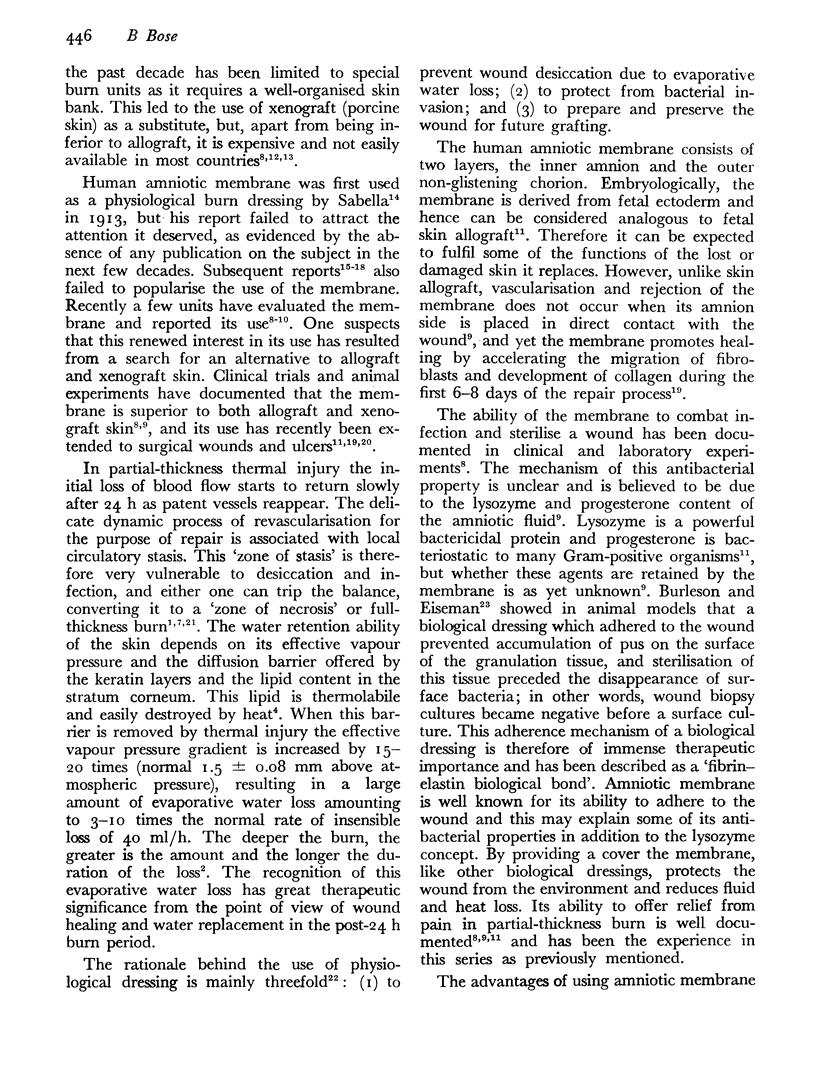Abstract
The use of amniotic membrane as a biological dressing for thermal injury is simple and cheap and has been found to be superior to allograft and xenograft. The membrane prevents heat and water loss from the wound surface and acts as a barrier against bacterial contamination, thus aiding the healing process and reducing morbidity. Another clinically significant and important property of the membrane is its ability to offer marked relief from pain. Over a period of 30 months amniotic membrane was used to treat 15 cases of burn in a small hospital, with uniformly satisfactory results. The practical aspects of this method of treatment can easily be adopted by any hospital regardless of its available facilities.
Full text
PDF



Selected References
These references are in PubMed. This may not be the complete list of references from this article.
- Bapat C. V., Kothary P. M. Preliminary report on acceleration of wound healing by amnion membrane graft. Indian J Med Res. 1974 Sep;62(9):1342–1346. [PubMed] [Google Scholar]
- Baur P. S., Parks D. H., Larson D. L. The healing of burn wounds. Clin Plast Surg. 1977 Jul;4(3):389–407. [PubMed] [Google Scholar]
- Dino B. R., Eufemio G. G., De Villa M. S. Human amnion : the establishment of an amnion bank and its practical applications in surgery. J Philipp Med Assoc. 1966 Jul;42(7):357–366. [PubMed] [Google Scholar]
- Jelenko C., 3rd Studies in burns. I. Water loss from the body surface. Ann Surg. 1967 Jan;165(1):83–96. doi: 10.1097/00000658-196701000-00012. [DOI] [PMC free article] [PubMed] [Google Scholar]
- Miller T. A., Switzer W. E., Foley F. D., Moncrief J. A. Early homografting of second degree burns. Plast Reconstr Surg. 1967 Aug;40(2):117–125. doi: 10.1097/00006534-196708000-00002. [DOI] [PubMed] [Google Scholar]
- Moncrief J. A. The Scudder Oration on Trauma: unlocking the mysteries of the burn wound. Bull Am Coll Surg. 1977 Nov;62(11):14–19. [PubMed] [Google Scholar]
- Ninman C., Shoemaker P. Human amniotic membranes for burns. Am J Nurs. 1975 Sep;75(9):1468–1469. [PubMed] [Google Scholar]
- Shuck J. M., Pruitt B. A., Jr, Moncrief J. A. Homograft skin for wound coverage. A study of versatility. Arch Surg. 1969 Apr;98(4):472–479. doi: 10.1001/archsurg.1969.01340100104014. [DOI] [PubMed] [Google Scholar]
- WILSON J. S., MONCRIEF J. A. VAPOR PRESSURE OF NORMAL AND BURNED SKIN. Ann Surg. 1965 Jul;162:130–134. doi: 10.1097/00000658-196507000-00019. [DOI] [PMC free article] [PubMed] [Google Scholar]
- Zawacki B. E. Reversal of capillary stasis and prevention of necrosis in burns. Ann Surg. 1974 Jul;180(1):98–102. doi: 10.1097/00000658-197407000-00015. [DOI] [PMC free article] [PubMed] [Google Scholar]


